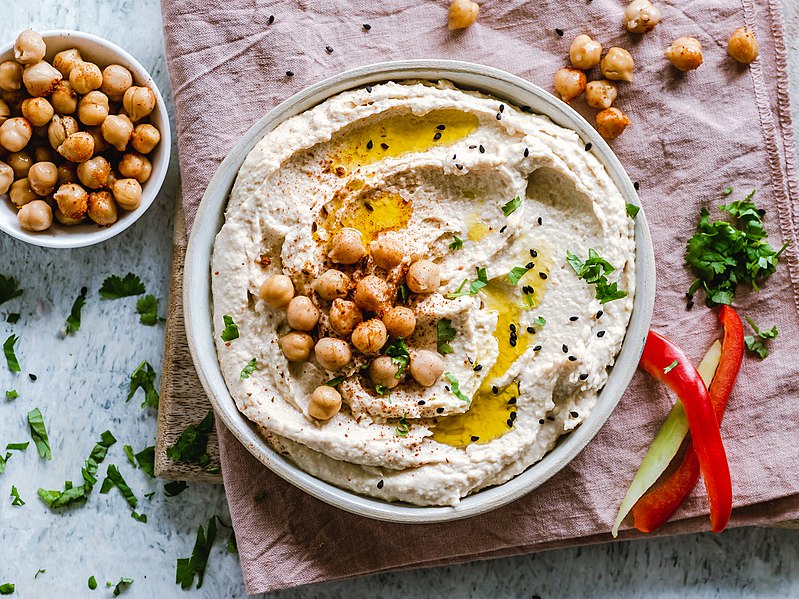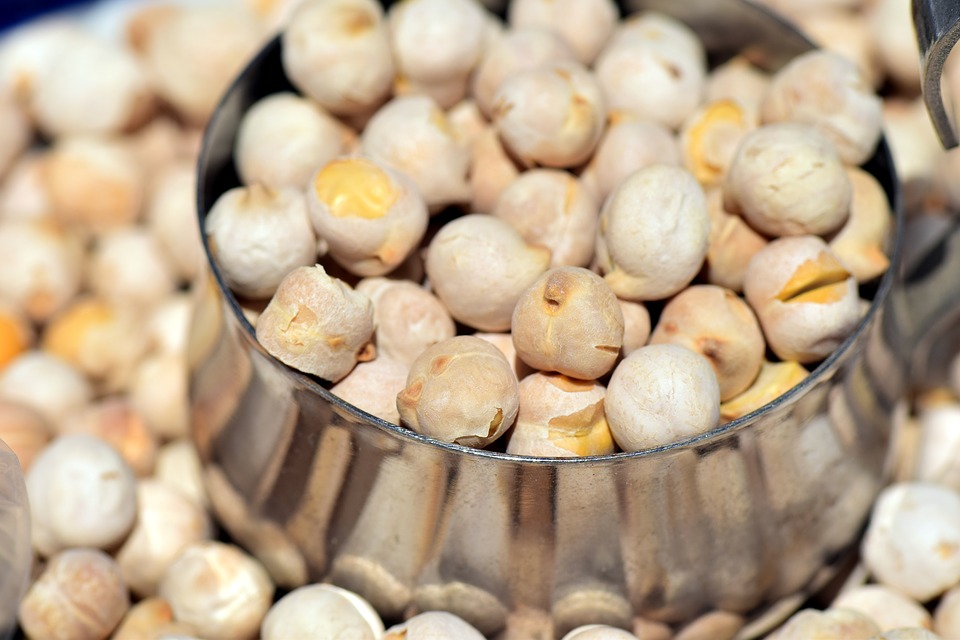Hummus: What is it?
**Chickpeas (also called garbanzo beans)
Tahini (sesame paste)
Lemon
Garlic
Cumin and Salt
Olive Oil

Where did at least one of its parts come from originally?
Chickpeas (also, garbanzo beans; desi chana; Latin Cicer arietinum)
- evidence of wild chickpeas in the south of what is present-day France c. 6700 BCE
- one of the earliest domesticates: evidence of cultivation in Jericho and present-day Turkey c. 7500 ya
- pulse (the seed of a legume), therefore a major source of protein and fibre
- now the third most important pulse in the world according to Mansfeld’s World Database of Agricultural and Horticultural Crops
- largest producers today are India, Pakistan, Ethiopia, Turkey, and Mexico
- spread throughout the Roman Empire, as far as the Rhine frontier, by the 1st Century CE
- mentioned in Charlemagne’s capitularies in the 8th Century CE
- reached the Americas via the Columbian Exchange (“Old World” –> “New World”), but only slowly adopted in North America despite its nutritional value
Historical Significance?
- chickpeas are a major protein source for over 20% of the world’s population
- over 12 million tons are processed annually, of which over 7 million tons are produced in India alone
- as people increasingly look for non-animal-based sources of protein, the humble chickpea has become increasingly popular: chickpeas are nutrient dense, providing more than 20% of a person’s daily value of protein, dietary fibre, folate, and some minerals
- chickpea water can be used as a substitute for egg whites in vegan meringue
Chickpea, New World Encyclopedia; https://www.newworldencyclopedia.org/entry/Chickpea#Use [accessed 06.01.2020] Mansfeld's World Database of Agricultural and Horticultural Crops; http://mansfeld.ipk-gatersleben.de/apex/f?p=185:3 [accessed 06.01.2020] Nathan Nunn & Nancy Qian, "The Columbian Exchange: A History of Disease, Food, and Ideas", Journal of Economic Perspectives 24 (Spring 2010): 163-188; https://scholar.harvard.edu/files/nunn/files/nunn_qian_jep_2010.pdf [accessed 06.01.2020]


Recent Comments